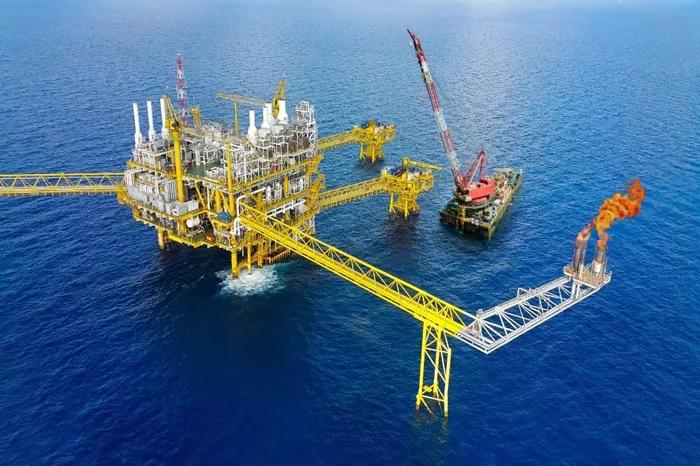Timing of Production Cuts
OPEC+, the coalition of the Organization of the Petroleum Exporting Countries and its allies (led by Russia), has confirmed new oil production cuts starting May 2025. These cuts are part of a broader effort to stabilize global oil markets in the face of unpredictable demand and volatile prices.
As announced in late 2024, OPEC+ will continue voluntary output cuts totaling 2.2 million barrels per day (bpd) through the second quarter of 2025. This plan was first introduced during a meeting held in November 2024 and was reaffirmed in early 2025. The production cutbacks are designed to gradually phase out based on future market conditions, with the group committed to reviewing adjustments monthly.
Here’s a timeline of the current production plan:
May 2025: Additional voluntary cuts from multiple OPEC+ members take effect.
June 2025: Review of compliance and market impact, with a decision on further adjustments expected.
July to September 2025: Possible extension or softening of cuts depending on oil prices and economic indicators.
Reasons for Production Cuts
Stabilizing the Market
OPEC+ routinely adjusts oil output to maintain market stability. When oil supply outweighs demand, prices drop sharply—hurting producer economies. Conversely, cutting production can raise or stabilize prices when demand is weak.
In 2025, the group is facing a mix of challenges:
Uncertain global demand: Recovery from economic slowdowns in parts of Asia and Europe remains fragile.
High inventory levels: Large reserves of unsold oil have built up in some regions.
Energy transition pressures: As more countries invest in renewable energy, long-term oil demand is facing new headwinds.
Responding to Price Volatility
Crude oil prices fluctuated widely throughout 2024 and early 2025. By reducing supply, OPEC+ aims to put a floor under oil prices, ensuring they don’t fall below profitable levels for member nations.
For example, Brent crude, the global benchmark, had dropped below $75 per barrel in late 2024—well below the budget breakeven points for countries like Saudi Arabia and Iraq.
Geopolitical and Economic Considerations
Geopolitical factors also play a major role in the decision to cut output:
Middle East tensions: Instability in the region can threaten supply chains, but OPEC tries to manage that risk through proactive policy.
Russian economy: Facing Western sanctions, Russia has a strong incentive to keep oil prices high to sustain revenue.
U.S. shale competition: Higher prices can incentivize U.S. shale producers, which is something OPEC+ tries to balance carefully.
Impact on the Market
Oil Prices
Production cuts typically drive oil prices higher by lowering supply. Since the announcement of the extended 2025 cuts, prices have already shown signs of firming. Analysts expect Brent to hover between $85 and $90 per barrel during the summer of 2025 if cuts remain in place.
Global Supply and Demand
By reducing output, OPEC+ is pulling around 2.2 million bpd off the market. That creates a tighter supply landscape, especially as demand from China and India picks up during the warmer months.
If demand rises faster than expected, the cuts could lead to short-term shortages, putting upward pressure on fuel costs and inflation.
Consumer and Industrial Effects
Consumers may notice higher prices at the pump, especially in the U.S. and Europe where gasoline and diesel prices are closely tied to crude oil benchmarks. Industries like:
- Aviation
- Logistics
- Manufacturing
At the same time, investors in oil and gas may benefit from higher share prices and dividends, especially in countries like the U.S., Canada, and the UAE.
Member Contributions
OPEC+ is made up of 23 nations, with different levels of output and varying economic needs. Here are the most important contributors to the May 2025 cuts:
Saudi Arabia
Cutting an additional 1 million bpd
Continues its role as the group’s de facto leader
Seeking to balance short-term price gains with long-term market share
Russia
Reducing exports by 471,000 bpd
Focused more on export volumes rather than crude production levels
Maintaining flexibility in response to sanctions and domestic needs
Iraq
Contributing to voluntary cuts despite economic pressure
Committed to reducing 220,000 bpd as part of the 2025 plan
Balancing internal political pressure and OPEC obligations
UAE, Kuwait, Algeria, Kazakhstan
Each contributing modest but impactful cuts, usually in the 100,000–200,000 bpd range
Emphasizing cooperation and market alignment
Monthly Monitoring
A key feature of OPEC+’s current approach is the Joint Ministerial Monitoring Committee (JMMC), which meets monthly to:
- Review compliance
- Monitor price trends
- Propose new recommendations
Conclusion
OPEC’s decision to implement fresh oil production cuts starting in May 2025 marks a significant move in its ongoing effort to manage the balance between supply, demand, and price. With the global economy still on shaky ground and energy markets evolving rapidly, the cuts are designed to bring stability and predictability.
While the move is likely to lead to higher oil prices, it also reflects the group’s desire to protect long-term investment in fossil fuels during a time of uncertainty. The impact will be felt across consumer markets, industries, and global supply chains.
As the situation evolves, all eyes will be on upcoming OPEC+ meetings and whether these cuts succeed in their goals—or spark new shifts in the global energy landscape.
Related topics:

